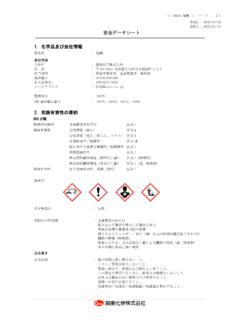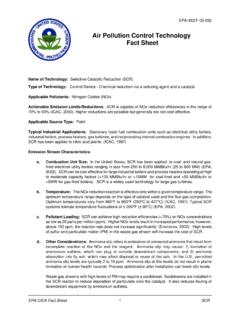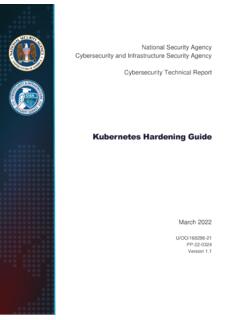Transcription of CICA & CANZ Guidance Note Crane Stability and Ground …
1 Lifting Industry Standards CICA & CANZ Guidance Note Crane Stability and Ground Pressure Author: The Crane Industry Council of Australia CICA-GN-0013-A Date: 30/01/2017 CICA-GN-0013-A Page 2 of 23 Lifting Industry Standards Table of Contents 1. Introduction .. 3 2. Responsibility .. 3 3. Loads and Forces .. 4 Crane loads .. 4 Rigging gear .. 4 Object loads .. 4 Load cases .. 4 Calculation.
2 4 Lifting on rubber .. 9 Articulated Crane .. 9 Manufacturer s software .. 9 Theoretical calculations .. 10 4. Crane Mats .. 10 Crane mat size calculation - uniform pressure .. 10 Example 1 .. 10 Example 2 .. 11 Crane mat strength and stiffness .. 11 5. Ground Condition .. 11 Ground capacity .. 11 Trench diagram .. 12 6. Reference .. 13 7. Further Information .. 14 Appendix A Articulated Crane Axle Loading .. 15 Appendix B Manufacturer Software Calculation Examples Outrigger Pad Load.
3 17 Disclaimer and Copyright This CICA&CANZ Guidance Note has been compiled for general information only, is not to be considered as a substitute for professional advice, and should not be treated as an exhaustive statement on the subject. The Crane Industry Council of Australia (CICA) and the Crane Association of New Zealand (CANZ) accept no responsibility for the accuracy, completeness or currency of the material included in this Guidance Note. Users of this Guidance Note are encouraged to obtain professional advice and to exercise their own skill and care in relation to any of its material.
4 CICA and CANZ disclaim any and all liability or responsibility for any loss or damages arising out of any use of, or reliance on, this Guidance Note. This Guidance Note is copyright. Readers may use and reproduce this material in an unaltered form only for non-commercial use within their own organisation. Apart from any use permitted under the Copyright Act 1968, all other rights are reserved. CICA-GN-0013-A Page 3 of 23 Lifting Industry Standards 1.
5 Introduction Many factors need to be considered when safely setting-up mobile cranes on site. Crane Stability often depends on the integrity of the Ground on which it stands. Effective assessment of Ground conditions is essential to assist with safe set up and operation of cranes. To reduce the risk of Crane accidents as a result of improper Crane set-up, planning activities shall be carried out by a competent person(s) to assess the capability of the Ground to withstand the loads and pressures imposed by the lifting equipment.
6 All parties who are involved in the planning, set up and use of cranes on site must be aware of the fundamental criteria, planning issues and risk assessments that are needed to ensure lifting operations proceed in a safe and stable manner. This Guidance Note provides general Guidance to assist on: determining the load exerted by mobile Crane outriggers or crawler Crane tracks determining the suitability of the Crane mats, and bearing capacity of different types of soil. 2. Responsibility As with all activities on construction sites, the effective management of the safety of lifting operations can only succeed if all parties involved are clear about their roles and responsibilities.
7 It is essential for all persons undertaking these roles to be competent, having relevant up-to-date training and the qualifications and experience appropriate to the operations for which they are responsible. The responsibilities for undertaking the various activities involved in Ground assessment are set out below: A person conducting a business or undertaking (PCBU) that includes the carrying out of construction work ( the principle contractor in control of the project site) has overall responsibility for the safety of all personnel on site.
8 They should ensure that where a Crane is being used to carry out a task, adequate steps have been taken to ensure the Stability of the Crane during transport onto site, set up, use, movement, maintenance, dismantling and removal from the site. PCBU should provide accurate geotechnical report for the site Ground condition or other relevant information for Crane Stability to the worker responsible for the lifting operations if this is necessary for the safe operation of the lifting activity. It is usually the PCBU s responsibility to make sure the Ground is safe to work on.
9 A worker who carries out work for a PCBU ( the person or company in control of a lifting operation) is responsible for all aspects of planning, supervision and execution of the lifting operation, including ensuring that the Ground or structure on which equipment stands will take the loads imposed by the plant. This does not mean that the worker has to be an expert in Ground assessment, they must however take reasonable steps to satisfy themselves that the information provided by the person in control of the site is relevant and appropriate.
10 The worker should have the necessary confidence and authority to carry out their duties effectively and safely. Where doubt exists as to the accuracy or sufficiency of the information provided it is the responsibility of the worker to ensure that the lifting operation does not proceed until the doubt has been satisfactorily resolved. CICA-GN-0013-A Page 4 of 23 Lifting Industry Standards 3. Loads and Forces Assessment of loads and forces imposed by the Crane on the Ground shall be conducted during the planning stage.







